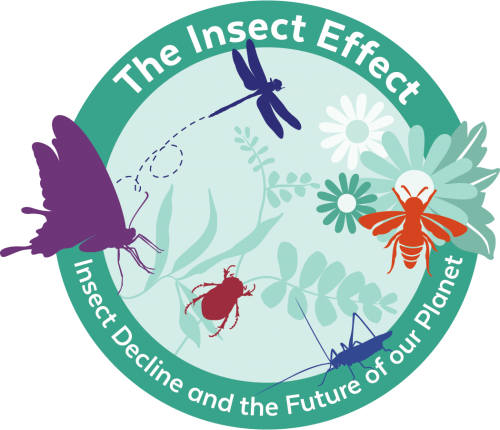A Biased View of Eco Bed Bug Exterminators Dc
A Biased View of Eco Bed Bug Exterminators Dc
Blog Article
Eco Bed Bug Exterminators Dc Fundamentals Explained
Table of ContentsThe smart Trick of Eco Bed Bug Exterminators Dc That Nobody is Talking AboutExamine This Report about Eco Bed Bug Exterminators DcEverything about Eco Bed Bug Exterminators DcEco Bed Bug Exterminators Dc Fundamentals ExplainedAll About Eco Bed Bug Exterminators Dc
Due to the fact that chemicals are poisonous, they are also potentially dangerous to human beings, pets, other organisms, and the environment. Individuals that utilize chemicals or on a regular basis come in call with them should recognize the loved one toxicity, prospective health impacts, and preventative measures to decrease direct exposure to the products they utilize. Hazard, or danger, of making use of chemicals is the possibility for injury, or the level of risk entailed in utilizing a chemical under a given collection of conditions..png)
Applicators can reduce or virtually get rid of direct exposure-- and therefore lower threat-- by adhering to the label guidelines, utilizing individual protective garments and devices (PPE), and dealing with the chemical correctly. Even more than 95 percent of all pesticide exposures come from facial direct exposure, primarily to the hands and forearms. By putting on a set of unlined, chemical-resistant gloves, this type of direct exposure can be almost removed.
The harmful impacts that happen from a solitary exposure by any type of course of access are called "severe impacts." The four routes of direct exposure are dermal (skin), inhalation (lungs), dental (mouth), and the eyes. Severe toxicity is established by checking out the dermal poisoning, inhalation toxicity, and dental toxicity of examination animals.
Everything about Eco Bed Bug Exterminators Dc
Acute toxicity is measured as the quantity or concentration of a toxicant-- the a.i.-- needed to kill half of the animals in a test populace. This action is generally revealed as the LD50 (lethal dose 50) or the LC50 (deadly concentration 50). Furthermore, the LD50 and LC50 values are based on a single dose and are recorded in milligrams of pesticide per kilogram of body weight (mg/kg) of the test pet or partly per million (ppm).
The lower the LD50 or LC50 worth of a chemical item, the better its toxicity to people and pets. Chemicals with a high LD50 are the least toxic to human beings if utilized according to the directions on the product tag. The chronic toxicity of a pesticide is figured out by subjecting examination animals to long-term direct exposure to the active ingredient.
The chronic poisoning official site of a pesticide is harder than severe poisoning to establish with lab evaluation. Products are classified on the basis of their family member severe poisoning (their LD50 or LC50 values). Pesticides that are categorized as highly harmful (Toxicity Classification I) on the basis of either dental, dermal, or inhalation poisoning must have the signal words threat and toxin published in red with a skull and crossbones sign prominently presented on the front panel of the package tag.
The acute (single dosage) oral LD50 for pesticide products in this team ranges from a trace total up to 50 mg/kg. As an example, direct exposure of a couple of declines of a product taken by mouth can be deadly to a 150-pound individual. Some pesticide products have just the signal word risk, which tells you absolutely nothing about the severe toxicity, simply that the product can cause severe eye damage or serious skin irritation
The smart Trick of Eco Bed Bug Exterminators Dc That Nobody is Talking About
In this group, the intense dental LD50 ranges from 50 to 500 mg/kg. A tsp to an ounce of this material might be fatal to a 150-pound person (exterminator). Pesticide items categorized as either slightly toxic or relatively nontoxic (Toxicity Categories III and IV) are required to have the signal word care on the pesticide label

All pesticide toxicity values, including the LD50, can be found on located product's Item Safety Product Sheet (MSDS). Pesticide tags and MSDS can be obtained from merchants or makes - https://issuu.com/ecobedbug3xt. The symptoms of chemical poisoning can vary from a light skin inflammation to coma or even death.
People likewise differ in their level of sensitivity to different levels of these chemicals. Some people may show no response to a direct exposure that may create serious illness in others (bed bug treatment). Due to possible health and wellness worries, pesticide individuals and handlers need to acknowledge the usual symptoms and signs of pesticide poisoning. The impacts, or symptoms, of chemical poisoning can be extensively specified as either topical or systemic.
See This Report about Eco Bed Bug Exterminators Dc
Dermatitis, or swelling of the skin, is accepted as the most generally reported topical result connected with chemical direct exposure. Some individuals often tend to cough, wheeze, or sneeze when subjected to chemical sprays.
This signs and symptom normally subsides within a couple of minutes after a person is eliminated from the exposure to the toxic irritant. Nevertheless, a response to a chemical product that creates a person not just to sneeze and cough but likewise to create serious intense breathing signs is much more likely to be a real hypersensitivity or sensitive reaction.
Systemic effects are fairly different from topical impacts. They frequently take place away from the original factor of call as an outcome of the pesticide being taken in right into and dispersed throughout the body.
Report this page